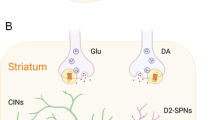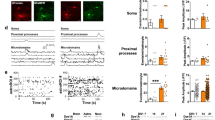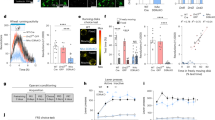Abstract
Because dopamine (DA) D2 receptors are a target in neuroleptic therapy and have been found to be elevated in schizophrenia, the human DA D2 receptor gene was examined for possible abnormalities in schizophrenia. Moreover, since D2 receptors in psychosis have a reduced coupling to D1 receptors, the cytoplasmic third loop of D2 was chosen for deoxyribonucleic acid (DNA) sequencing, since this region is essential for coupling to G-proteins. This region also contains exon 5, which is expressed in the long form of D2, but not in the short form of D2. In eight schizophrenia cases, this region had normal exon sequences (exons 4, 5 and 6), and normal sequences at its intron-exon junctions. However, exon 6 contained three DNA polymorphic base changes, and introns 4 and 5 revealed three missing bases and two polymorphic base changes, none of which would be expected to alter the D2 receptor protein in schizophrenia.
Similar content being viewed by others
Log in or create a free account to read this content
Gain free access to this article, as well as selected content from this journal and more on nature.com
or
Author information
Authors and Affiliations
Additional information
Address reprint requests to: Philip Seeman, M.D., Ph.D., Department of Pharmacology, Medical Sciences Building, University of Tonto, Toronto, Ontario, Canada M5S 1A8.
Rights and permissions
About this article
Cite this article
Seeman, P., Ohara, K., Ulpian, C. et al. Schizophrenia: Normal Sequence in the Dopamine D2 Receptor Region that Couples to G-Proteins. DNA Polymorphisms in D2. Neuropsychopharmacol 8, 137–142 (1993). https://doi.org/10.1038/npp.1993.15
Received:
Revised:
Accepted:
Issue date:
DOI: https://doi.org/10.1038/npp.1993.15
Keywords
This article is cited by
-
An association study of Taq1A ANKK1 and C957T and − 141C DRD2 polymorphisms in adults with internet gaming disorder: a pilot study
Annals of General Psychiatry (2017)
-
Dopamine D2 receptor gene polymorphisms and response to cabergoline therapy in patients with prolactin-secreting pituitary adenomas
The Pharmacogenomics Journal (2008)



